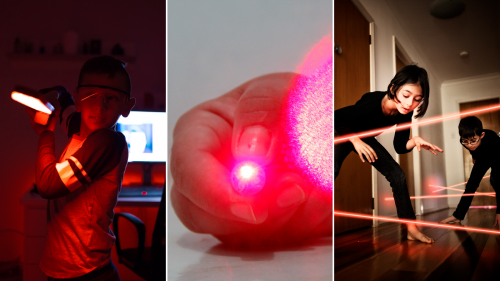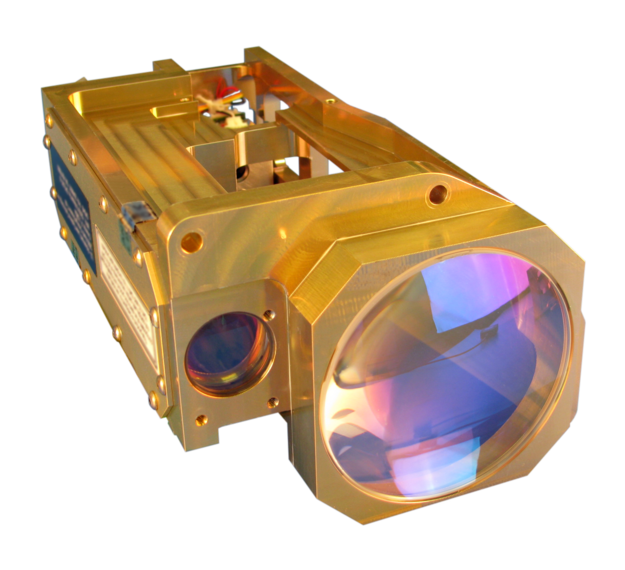Handy News To Selecting A Safe Laser Device
Handy News To Selecting A Safe Laser Device
Blog Article
How Does Low-Level Safe Laser Therapy (Lllt), Help With Breathing Inflammation?
Low-level Laser Therapy (LLLT) is a safe and efficient method to treat inflammation in the respiratory tract. LLLT is effective in respiratory disorders such as bronchitis and asthma in which airway inflammation is a major cause of symptoms like wheezing and coughing.
Bronchodilation LLLT may help relax the smooth muscle cells that line airways. This could benefit those suffering from respiratory conditions such as COPD or asthma, in which asthma sufferers experience difficulty breathing due to bronchoconstriction.
Improved blood circulation LLLT stimulates the microcirculation as well as vasodilation. The increased flow of blood results in improved airway and lung function. The improved blood circulation will help deliver oxygen and nutrients to the inflamed tissues which aids in healing and decreasing inflammation.
Increased Immune response LLLT was shown to modulate the immune function through the stimulation of cells called cytokines. It also improved the process of phagocytosis, where immune cells consume and destroys pathogens. This can boost the immune system's ability to fight respiratory infections and decrease inflammation in the airways.
Reduced Mucus Production Reduced Mucus Production LLLT can reduce the production of mucus within the airways by encouraging the elimination of mucus and decreasing inflammation in the respiratory tract. This may be beneficial to people suffering from chronic sinusitis and bronchitis in which excessive mucus causes respiratory symptoms.
Alleviation Allergic reactions - LLLT can be utilized as a potential therapy for allergic rhinitis. The condition is characterised by inflammation of the nasal passages, sinuses and nasal membranes. LLLT can help reduce allergies, such as nasal congested, sneezing, or itching.
In general low-level Laser Therapy by safe Laser is a non-invasive, treatment that is free of drugs to manage respiratory inflammation. It can alleviate discomfort while also enhancing breathing function. However, LLLT should only be utilized after consulting with an expert physician to determine the correct diagnosis. Take a look at the best safe laser 150 for more info including lágy lézer, lézer kezelés hatása, lágylézer kezelés, orr lézer készülék, lágy lézer kezelés, lézeres fájdalomcsillapítás, safe laser vélemények, otthoni lézer kezelés, lágylézer készülék, gyógyító lézer and more.
What Is The Purpose Of The Safe Laser In The Treatment Of Ear, Throat, Nose And Throat Issues?
Low-level laser therapy (LLLT) can assist with numerous ear, nose and throat (ENT) problems through several mechanisms- Reduced Inflammation- LLLT is anti-inflammatory which help to reduce inflammation of the tissues of the nose, ear and throat. This is especially beneficial in conditions such as sinusitis, tonsillitis or rhinitis where inflammation can cause symptoms such as nasal congestion, sore mouth, and earache.
Pain Relief - LLLT helps relieve the discomfort caused by an earache, sore throat and pressure in the sinuses.
Enhanced Tissue Regeneration - LLLT boosts cellular metabolism, which results in faster healing and regeneration of tissues. LLLT can aid in promoting faster healing for ENT ailments, like otitis medie (middle ear infections) or pharyngitis.
Improved Blood Circulation LLLT stimulates microcirculation by enhancing vasodilation. This boosts the flow of blood into the affected area. Improved blood circulatory can help provide nutrients and oxygen, which aid in healing and reduce inflammation.
Antimicrobial effects- LLLT was shown to possess antimicrobial properties. This could help in reducing the amount of bacterial and viral burdens in the nasal and throat passages. This can be beneficial in treating conditions like tonsillitis or sinusitis.
Treatment of Allergic Symptoms LLLT can ease symptoms associated with allergy rhinitis as well as hay fever by reducing inflammation inside the nasal passages. It can reduce nasal congestion as well as the tendency to sneeze.
Tinnitus treatmentTinnitus management LLLT treatment is being investigated as a potential treatment for tinnitus. Tinnitus can be characterized as buzzing, ringing or humming sounds in the ear. LLLT is thought to improve blood circulation and reduce inflammation within the auditory systems and lead to a reduction of the tinnitus.
Overall Low-Level Laser Therapy using Safe Laser is a safe and non-invasive treatment for many ear-nose-throat-related issues. This therapy provides relief from symptoms and speeds the healing process. It is recommended to consult with an ENT specialist prior to applying LLLT for ENT ailments. This will ensure that you get the right diagnosis and receive treatment recommendations. Have a look at the most popular safe laser 150 for more info including mozgásszervi problémák, safe laser használata, lágylézer bérlés, safe laser kezelés budapest, lézer kezelés hatása, otthoni lézer kezelés, lágylézer kezelés budapest, orr lézer készülék, laser kezelés, safe laser használata and more. 
What Is The Time Frame For The Laser Device To Be Effective In Acute Situations?
Safe Laser's ability to relieve acute ailments could require several sessions, depending on the intensity, response of each individual and treatment plan prescribed by a medical professional. In a lot of cases, patients might notice significant improvement in acute conditions after only a few sessions. LLLT is often effective for injuries that have just occurred, inflammation or pain. In certain instances, patients may experience relief from pain, less swelling, and reduced inflammation after just a couple of LLLT treatments. To achieve more long-lasting effects, however, it's usually recommended to schedule several LLLT treatments spread over a time.
The amount of LLLT treatments needed for treating acute illnesses can vary based on the disease being treated, the severity of symptoms and other variables including the individual's overall health or the response to treatment. Health professionals will create an appropriate treatment plan for each individual. This could mean scheduling LLLT at various times throughout the throughout the day, with different durations.
In the case of acute illnesses, you must adhere to the treatment plan recommended by a health specialist. It is also recommended to keep track of every scheduled LLLT therapy sessions. Additionally, patients may see cumulative improvements as time passes with ongoing treatment. If there are concerns or doubts about the treatment program or progress, it's important to talk about them with a medical professional.